ADHD, Stimming, and Tics: Understanding the Connection
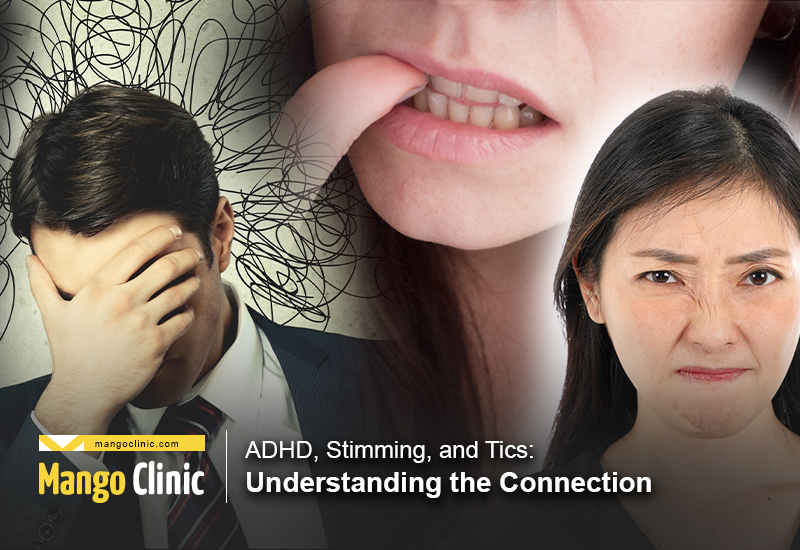
Attention deficit hyperactivity disorder (ADHD), though highly prevalent, is a treatable condition. In the USA, 5% of children are diagnosed with ADHD. It is common for medical doctors to prescribe medications very early, which should be discouraged because certain facts about ADHD often go undiagnosed.
Get proper treatment for ADHD from mental health experts. Click the button below to book your appointment.
We here will talk about the link between stimming, tics, and ADHD. We will discover what these terms mean and how they indicate a greater problem, such as an underlying mental health issue.
Table of Contents
1. What Is Stimming?
Stimming refers to any self-stimulating behavior exhibited by individuals. Have you ever noticed an individual rocking back and forth, interrupting conversations, or simply walking in circles when they sit back and enjoy a movie? If so, then the chances are that person may have been stimming.
What Does Stimming Feel like?
There is an assumption that we can deal with various conditions and internal stressors by proactively fixing them. But what if I tell you, many stimmers do not completely understand the reason behind their own actions. The ironic thing is, most of us who stim don’t even realize we are doing it.
We aren’t self-aware enough to identify if our patterns were coming from an unhealthy cause like poor diet therapy, unhealthy amounts of caffeine and coffee intake, and overstimulation by television commercials and media (mobiles and video games).
If you’ve ever been told that you behave strangely, don’t get offended. The reason for this is not because you don’t know how to behave in public but because there is a medical condition called “stemming”, and some of your repetitive actions could fall into that category even if you were going through your routines in a ritualized fashion.
Stimming is a behavior that usually manifests as a repetitive, rhythmic movement. It is sometimes seen in those who have autism, ADHD, or severe anxiety and stress, but it can also be brought on as a form of self-soothing or as a way to pass the time when one is bored.
While those who stim don’t even realize they’re doing it, for those around them, it can be rather off-putting and distressing to see someone performing these repetitive motions for several minutes at a time and may make others feel like their lives are being negatively shaped by this behavior; therefore, we need to help our loved ones find ways to avoid stimming whenever possible.
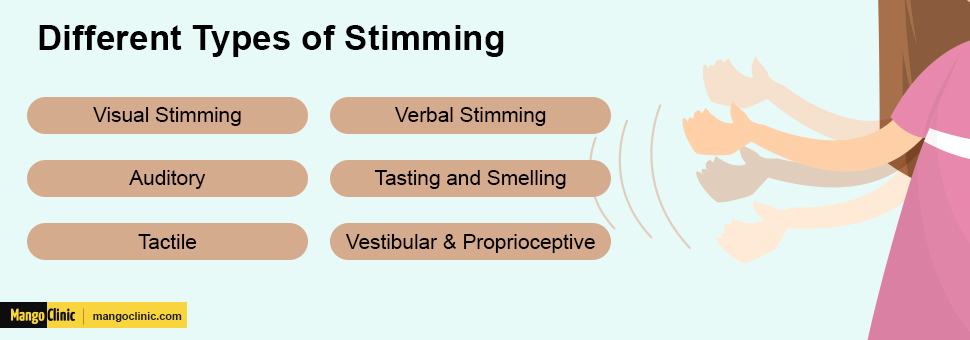
What Causes Stimming?
As mentioned earlier, there are many possible triggers of stimming, including:
- Stress
- Anxiety
- Depression
- Boredom
- ADHD
- Autism
People who have autism tend to move a lot. Unfortunately, a person with autism can often be seen rocking back and forth, flapping the arms or hands the same way over and over again. Even though these repetitive behaviors might seem inconsiderate, those with autism often don’t even realize it.
What Is Autism?
Autism, more commonly known as an autism spectrum disorder (ASD), is any condition affecting how an individual interacts with other people and the world around them. Autistic people may present with abnormal behavior patterns, including deficits in social interaction and verbal communication skills, repetitive behaviors like repeatedly locking on to one’s particular interests, issues with communicating emotions, etc. The specific effects autism has on people are different for each person affected by it.
Stimming in Autism
A person with autism tends to engage in various behaviors and will continue to do so throughout their lives, and among the most common of these is called stimming. For example, a person with autism may spend hours each day arranging their things when they could be reading a book instead. In cases such as this, it almost seems as if the person spending all that time rearranging everything has a mental disorder of some type.
This behavior is considered stimming when someone with autism performs it with an object that bores them somehow, which makes the stimming pointless in actuality. But what people with autism have going for them is how they can focus on whatever object they want without distraction from another one in particular in a way that doesn’t give them stress or distress.
Manage your stress when you have gotten ADHD. Click the banner below to book your appointment.

Some of the most common stimming behaviors observed in people with autism include:
- Scratching the skin
- Licking or stroking things
- Pulling hair
- Rocking
- Bouncing
- Jumping
- Rearranging objects
- Staring at things
- Sniffing things or people
- Repeating words or phrases
- Twirling
- Rapid blinking
- Pacing or tiptoeing
- Flapping hands
One can get so engrossed in the act of stimming that they may harm themselves unknowingly. Here are some stimming behaviors which might be harmful to oneself:
- Punching
- Biting
- Cutting or scratching the skin
- Banging head into a wall
- Swallowing dangerous or toxic things
These are only a few examples of repetitive movements that can help soothe an anxious person.
There is hope for autistic people to use ritualistic behavior to cope with daily situations and deal with emotions correctly. It has been found that most individuals who exhibit compulsive behavior use these rituals to cope with affective pain in their environment.
Get yourself evaluated for ADHD by expert doctors. Click the button below to book your appointment.
Why Do People with Autism Stim?
It’s virtually impossible to pinpoint the exact reasons why someone with autism may be acting out. There are some theories, such as:
Overstimulation: In most ASD cases, stimming can help block out excess sensory input.
Stimulation: In times of need, stimming provides additional sensory input.
Pain Reduction: The sensation of pain is lessened by the repeated banging of the head or body. It has been hypothesized that stimming releases beta-endorphins, which are responsible for feelings of anesthesia or pleasure.
Managing Emotions: A stimming burst can be triggered by both positive and negative emotions. When we are excited or happy, our bodies react physically, like jumping and flinching. Stimuli may become destructive if anger or frustration intensifies them.
Autoregulation: The purpose of some stims is to comfort or soothe. Sucking the thumb is a common method of relaxation for infants.
Other reasons for stimming in people with autism include:
- For relaxation during anxiety
- To express a negative emotion
- To avoid activities
Throwing one’s head back, flicking one’s fingers, or flicking stuff are some of the most common stims that people with autism exhibit. This is seen in other disorders, but what sets autism apart from other disorders is that people often do it when they get upset or stressed out about something. A child might also do this when they are excited or want to get attention from others around them.
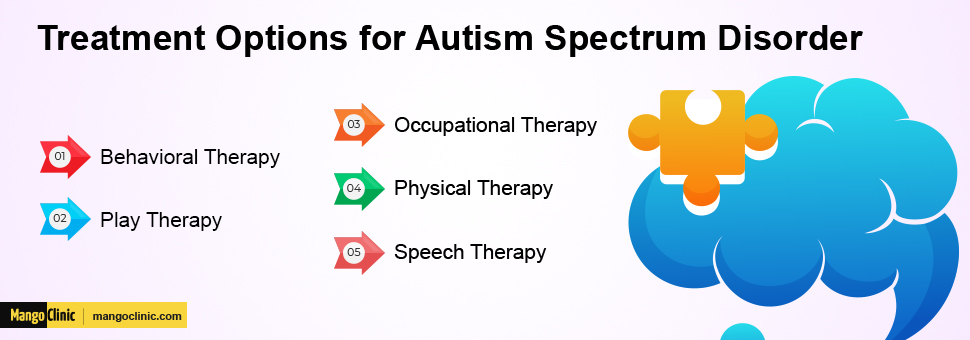
Autism Spectrum Disorder (ASD)
Autism spectrum disorder is a prevalent neurodevelopmental condition defined by a wide spectrum of characteristics in which a child will often face challenges communicating and connecting with others. Some of the DSM-5 disorders associated with ASD include:
- Asperger’s disorder
- Pervasive developmental disorder not otherwise specified (PDD-NOS)
- Childhood disintegrative disorder
- Autism
Among the characteristic symptoms of autism spectrum disorder are:
- The repetition of motions and words
- Restricted interests
- Patterns of ritualized behavior
- Sensory input that is extremely sensitive
Several other conditions can also lead to stimming. For example, it has been seen in people with Down’s syndrome, cerebral palsy, and Fragile-X syndrome, among several others. There is a popular misconception amongst people that it relates specifically to those with ASD only.
Stimming behaviors non-related to autism include:
- Fingernail biting
- Finger-twirling of hair
- Cracking knuckles
- Drumming the fingers
- Whistling
Stimming is not restricted to people diagnosed with autism; people without autism also get into this habit. When you stim, it may be due to stress, anxiety, or even ADHD.
Do All Children and Adults with ADHD Stim?
For children or adults with ADHD, you’ll notice that repetitive self-stimulating behavior usually occurs in response to sensory stress or overwhelm and can appear to be more severe than that of children and adults with ASD. We theorize that when a child or adult with ADHD stims, it’s because they’re trying to concentrate and block out any distractions around them using both motor and auditory senses.
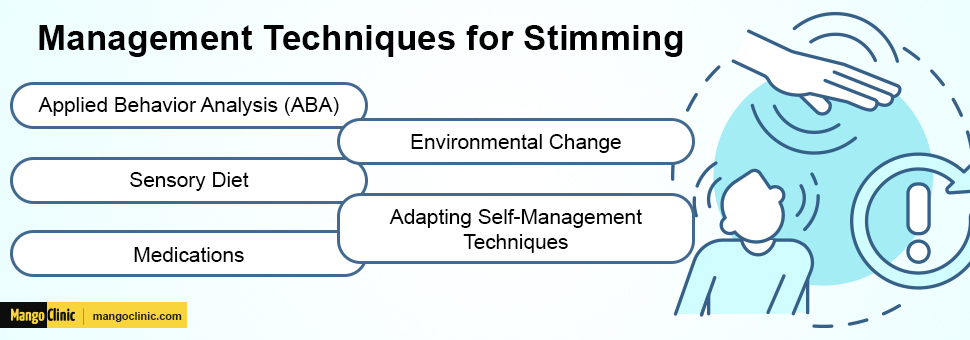
2. ADHD Stimming
ADHD stands for attention-deficit hyperactivity disorder. It involves distraction, impulsivity, and hyperactivity. There are several therapies for this condition with medications.
ADHD is more common in boys than girls, but statistics are still unclear exactly why this gender divide exists. It’s not likely to be caused by differences in brain chemistry or genetics.
It can’t be said for certain what sets ADHD apart from other developmental disorders. Studies have indicated that cognitive impairment might relate to the symptoms of ADHD, but the evidence is inconclusive.
This means that there is either no evidence or too little evidence to draw solid conclusions about impulsivity, hyperactivity, and attention deficit symptoms contributing to cognitive issues.
Symptoms of ADHD
The following symptoms characterize ADHD:
- Inability to concentrate
- Impulsive behaviors
- Fidgeting
- Excessively active
How Are Stimming and ADHD Related?
The primary link that we can establish between stimming and ADHD is the sensory overload caused due to the disorder. Due to the excessive stimulation, a person with ADHD may go into a state of sensory overload and tend to move about and fidget until their bodies and minds feel relaxed again. Stimulating oneself helps an individual focus more easily on an activity, whether it’s reading or writing.
There are various reasons why people with ADHD might usually feel like moving about, such as boredom, stress, too much high-frequency (HF) stimuli, or other issues that we need not go into detail just now.
It is said that individuals with ADHD use stimming to support their concentration on tasks at hand, for example, work-related tasks, college assignments, and exam preparations. All types of individuals often use stimming to improve their ability to concentrate.
Some examples include lightly biting the inside of your cheek or around your fingernails, tapping on something until it breaks, pacing back and forth in two small steps, cracking knuckles, etc.
Individuals display this stimming almost automatically as a way of self-soothing amidst mental stress, anxiety or doing things that do not engage them as much as they need attention.
Save yourself from the symptoms of ADHD. Click the banner below to book your appointment.

ADHD Stimming Vs Autism Stimming
| Stimming in ADHD | Stimming in Autism |
| The most common cause of self-stimulation is a distraction | Stimming is often used as a means of avoiding direct physical contact |
| Repeating actions more often | Repeating phrases and speech |
| Inability to control one’s impulses | Communication problems |
| Prominently fidgets | Self-soothes primarily by flapping the hands and rocking the body |
| A single stimming session lasts around 45 minutes, i.e., when unable to concentrate | Stimming for long periods is common among autism patients, and it is hard to stop it |
Types of ADHD Stimming
ADHD stimming is not limited to tapping and fidgeting in adults. ADHD stimming examples are instead grouped into various classifications, which are as follows:
Taste and Olfactory
- Sucking the thumb
- Tasting
- Loving to lick things
- Sniffing things or people
Vestibular
- Spinning
- Twirling
- Pacing
- Rocking
- Jumping
Visual
- Viewing things from the corner of the eye
- Idly gazing
- Slowly scanning an object with your eyes
- Blinking
- Organizing objects
Tactile
- Rubbing hands together
- Twirling hair
- Patting
- Rubbing
- Scratching the skin
Auditory
- Singing or reciting phrases or words from television
- Ears being covered and uncovered
- Snapping fingers
- Clapping
- Screaming
- Humming
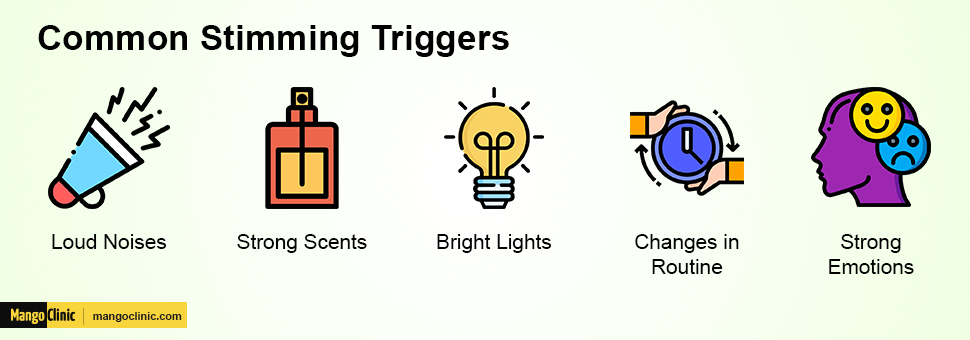
How Can You Break the Stimming Cycle?
The fact cannot be ignored that stimming is a coping mechanism. For those managing ADHD, stimming can be a means to help them deal with anxiety, stress, or complications related to ADHD. So, it is not only a symptom of ADHD, as the misconception says, but instead, it’s also a coping mechanism. And if it becomes challenging for your daily life activities, it needs to be controlled.
Self-stimulation can be controlled in some ways.
Understanding the Causes: Understanding the reasons for stimming and the triggers is very important. Know why a person is stimming even before it begins.
Removing the Trigger Factors: Reduce the stress or eliminate the triggers. You can encourage the use of calming methods such as relaxation techniques and stress balls.
Introduce Safe Stimming Methods: Educate yourself about safer and better coping mechanisms with the help of mental health experts.
Finding a Replacement: If your child needs to hear loud music, make sure they wear headphones. Take precautions to make sure that your child cannot hurt himself or others while participating in activities of this type.
3. ADHD Stimming Treatment
There are some possible ways to stop stimming. So, let’s get down to them.
1. Seek Mental Health Care from a Licensed Professional
One of the misconceptions about mental illnesses is that they cannot be treated or may simply be cured with willpower. While medications are often needed to bring symptoms under control, therapy, support networks, and self-care are also crucial in managing illness. It’s necessary to understand the seriousness of the condition you are experiencing and to proactively work with a mental health provider for all-rounded wellness.
2. Treat Underlying Mental Health Conditions
An underlying mental health condition is what drives many adults to engage in stimming behaviors, which is why by treating the root cause of the anxiety disorder, autism, or attention deficit hyperactivity disorder, it becomes much easier to eliminate any associated complications that might stem from these uncomfortable feelings or behaviors.
ADHD at Work can lead you to uncomfortable feelings. Click the button below to book your appointment.
3. Reduce or Eliminate the Triggers
Besides the underlying mental health causes, triggers are also a major concern when it comes to stimming. Apart from people with autism and ADHD, other people may also stim due to specific stimuli. Suppose you know what causes your stimming behavior. In that case, there is a better chance that you can overcome this habit easily, provided that you can control your responses to external stimulants.
Common stimming triggers include:
- Sudden routine changes
- Loud noises
- Excessively vibrant colors
- Intensely emotional situations
- Unfamiliar scents
However, people have different triggers that set off their stimming behavior. More importantly, anything can be a trigger of your stimming habit in ADHD. Try to look for the cause (or “triggers”) that lead you to engage in these movements. Think about your senses and figure out what might set you off!
You can always avoid triggers by developing alternative habits and engaging in activities like spiritual healing meditation, speaking with someone close if possible, and asking for help from family and friends – all of these will hopefully help you regain control over your body movements over time!
Lastly, if it helps, try distracting yourself from taking your mind off things – sometimes, that can work miracles.
4. Therapies
Self-stimulating behavior can be reduced with the therapy. Here are some options that might be helpful:
Speech Therapy: We all have certain habits when it comes to the way we communicate with others. A good way to learn how to communicate more effectively is by seeking guidance from a speech therapist.
In this case, a person who stims would be instructed in the proper way of articulating their thoughts publicly or during conversations with others, keeping them from interrupting another’s train of thought in a conversation and asking questions about something they may have found exciting.
Occupational Therapy: Occupational therapy is an effective treatment approach in the area of mental health care. It is often used to address issues due to various triggers, including sensory, cognitive, motor, and other factors.
It is also useful for treating problems that are related to mental health conditions such as ADHD. Occupational therapists are equipped to recognize your triggers throughout your workplace environment.
Applied Behavior Analysis Therapy (ABA): ABA is used to treat various behavioral and developmental disorders in children, such as ADHD, autism spectrum disorders, and learning disabilities.
During an ABA session, the therapist uses positive reinforcement to encourage children to modify their behaviors in the context of daily activities. If dealt with properly, ABA therapy can help many children overcome their issues and lead happier lives.
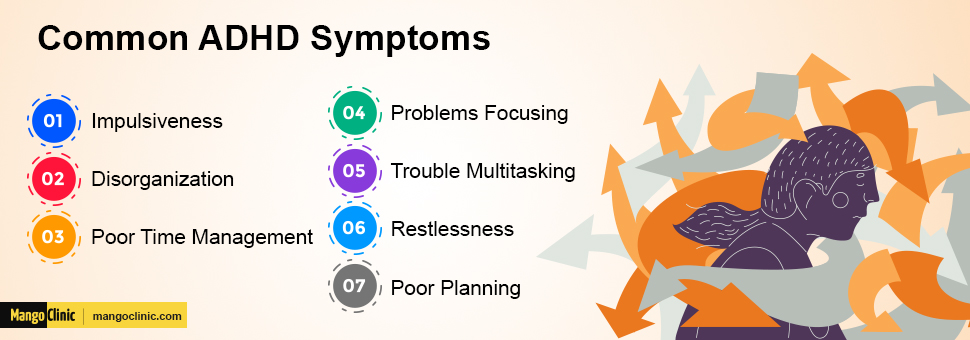
5. ADHD Medications
These are also helpful in treating the signs and symptoms of ADHD. ADHD medications are an integral part of ADHD stimming treatment. ADHD is treated with the following five drugs most widely:
- Adderall
- Ritalin
- Dexedrine
- Focalin
- Concerta
- Atomoxetine
- Guanfacine
People with ADHD often fidget and twitch as a result of untreated ADHD. You should only take FDA-approved medications following the prescription of a doctor. ADHD stimming can be effectively resolved with medication and therapy.
6. Make Exercise and Lifestyle Changes
Exercise is the solution to feeling happier and getting rid of stress. Doctors strictly recommend exercising at least 30 minutes a day, but it should be more because that’s just the minimum amount of time that can trigger chemicals called endorphins which help calm your mind.
7. Alter Stimming Behaviors
For kids with autism and ADHD, stimming can be comforting. The bouncing up and down or flapping of the hands helps control their anxiety. The best way to approach this situation is to encourage safe stimming. The following methods can help you do that:
- Schedule time in your day for stimming so that your mind can relax and take a break from procrastinating over mental issues and challenges.
- If you are stimming in public or at work, start to consider it a private act, one that should be done when you are near friends or family. Stimming will be reduced throughout the entire day if this is done.
- Replace your stimming rituals such as loud noises, tapping, and snapping with safer options such as fidget toys, squeezing stress balls, painting, doodling, and crafting.
Contact Us now for ADHD treatment or click the banner below to book your appointment.

Now that you’re aware of the benefits of altering stimming behaviors to the ADHD population, other primary concerns like hyperactivity or impulsivity need to be addressed. The information below will fill in some gaps regarding these important topics.
4. What Are Tics?
Tics occur when people repeatedly make sounds, move, or twitch. Tics may present differently in different individuals, and they can differ from one another. Tic disorders can be classified into three major categories, according to DSM-5.
- Vocal tic disorder
- Provisional tic disorder
- Tourette’s disorder
What Causes Tics?
No one knows precisely what causes tics, but it can be likely that mental illness (depression or anxiety), physical trauma, stress levels, sleep deprivation, and drug use may be some of the top reasons for these disparaging, uncontrolled movements of the body.
In addition, chronic diseases play a large role in developing tics; these include Huntington’s disease and cerebral palsy.

What Are the Most Common Tics?
Motor Tics: These include movements such as sniffing, clearing of the throat, eye blinking, head and shoulder shaking, and lip chewing. Tics can be distracting and uncomfortable to watch, so if you’ve got a friend who suffers from tics, don’t hesitate to accommodate their needs by turning away or offering encouragement during an episode.
If your loved one has difficulty with tics, you might want to steer clear of giving them caffeine since they can worsen symptoms.
Tourette Tics: Hollywood celebrities like Billie Eilish suffer from Tourette’s syndrome. In the DSM-5, Tourette’s syndrome is typically a clinical diagnosis used to explain Tourette’s tics. A few of the most common Tourette syndrome symptoms are listed below:
- Eye rolling
- Blinking
- Grimacing
- Shrugging shoulders
- Repetitive gestures
- Jumping
- Twirling
- Touching objects
ADHD Tics: There is a recognized connection between tic disorders and attention deficit hyperactivity disorder (ADHD), but typically people with ADHD experience very different tics. There seems to be a correlation between tics that involve hand movements, fidgeting, bouncing, looking away, or rolling eyes, basically anything involving movement other than the vocal cords.
Anxiety Tics: Anxiety tics are usually confused with nervous behaviors. Anxiety tics occur more between panicky episodes and stress. These very often cannot be predicted or scheduled in any way. Clenching fists and flaring nostrils are examples of common anxiety tics. The most common anxiety tics seen in adults are:
- Blinking
- Jerking
- Banging head
- Clicking fingers
- Touching things
- Repeating sounds
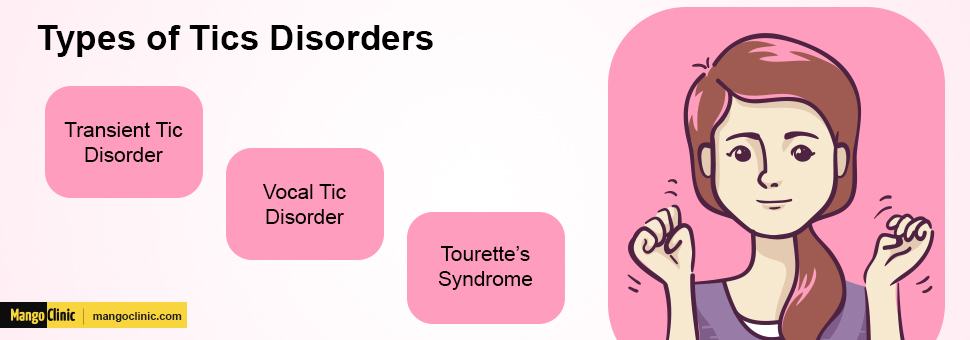
5. Can ADHD Cause Tics?
YES. Tics and ADHD have a strong connection. Most people who show tics have ADHD, and people who have chronic tics have ADHD. Most tics last only a few seconds. People with ADHD tend to experience tics on and off; some tics never go away, but some become problematic if no treatments are given.
There is also a possibility that ADHD medication may be a factor in linking ADHD and tics. In addition, ADHD stimulant medications may worsen tics among some people.
On the other hand, studies also say that non-stimulant ADHD medication seemed to decrease and heal tics in adults and children.
ADHD Tics Symptoms
The symptoms of ADHD tics look the same as those of other tics. A few examples are provided below:
- Repeating words
- Coughing
- Sniffing
- Shoulder shrugging
- Head movements
- Constant eye blinking
- Grunting
6. How to Calm Tics?
Tics don’t always need to be treated because, in most cases, they can be managed. But in some instances, the tics will become problematic and interfere with your life (for instance, if you’re attending school), resulting in self-imposed isolation.
Both self-help tips and therapeutic interventions can offer much relief when dealing with tics. Let’s go over them below!
Self-Help Tips to Calm Tics
- Use relaxation exercises and productive tasks to help you overcome stress, anxiety, and boredom
- Be careful not to get tired or overburdened
- If you focus your attention on your tics, your habits might get worse
- When you experience tics, you should be gentle with yourself and try to remain calm
- You shouldn’t feel embarrassed about tics because they are normal
- You can get support and help to avoid tics from your friends and family members if you let them know about your tics

Treatment Options for Tics
Let’s say you have tic symptoms that impair your daily activities. Treatment of tics using conservative methods and the consultation of a mental health expert as soon as possible are the best options. Tics can be treated in several ways, including:
Behavioral Therapy
All types of tic disorders, including ADHD tics, respond well to behavioral therapy. You will learn the new responses to replace tics using this therapy to identify the reasons for your tics, understand why they occur, and how to stop them.
Medication for Tics
The following FDA-approved medications have been successful in treating tics:
Neuroleptics: Antipsychotic drugs or neuroleptics are commonly used in the treatment of tics. The brain’s chemicals are regulated, and these hormones control movements. Aripiprazole, risperidone, and pimozide are all examples of neuroleptics.
Clonidine: ADHD symptoms such as tics can be relieved with this drug, along with other symptoms related to ADHD.
Tetrabenazine: Huntington’s disease is commonly associated with tic disorders, jerks, and tremors, and the prescription of this medication can help control these.
Botulinum Toxin Injections: The purpose of these medicines is to relax specific muscles.
A certified health care expert must supervise and prescribe any drug treatment.
Surgery for Tics
In deeper brain stimulation surgery, electrodes are placed on the brain areas associated with tics, such as the thalamus. This surgery takes place under general anesthetics; however, it is rarely performed because its efficacy is questionable at best.
Looking for medicinal ADHD treatment? Click the button below to book your appointment.
Outlook
Stimming and tics both exhibit a relapse-remitting pattern, and these symptoms worsen with anxiety, stress, and other factors, including overexcitement. However, this is not the only concern; living with tics can be frustrating and embarrassing for those who have to deal with them. Such situations require expert help and emotional support from the family and friends and an ADHD patient’s doctor.
The process of learning how to live with ADHD is hard work – but it can be particularly rewarding when one learns that their performance has improved after hours of dedicated effort.
Contact us at Mango Clinic for ADHD treatment or click the banner below to book your appointment.





